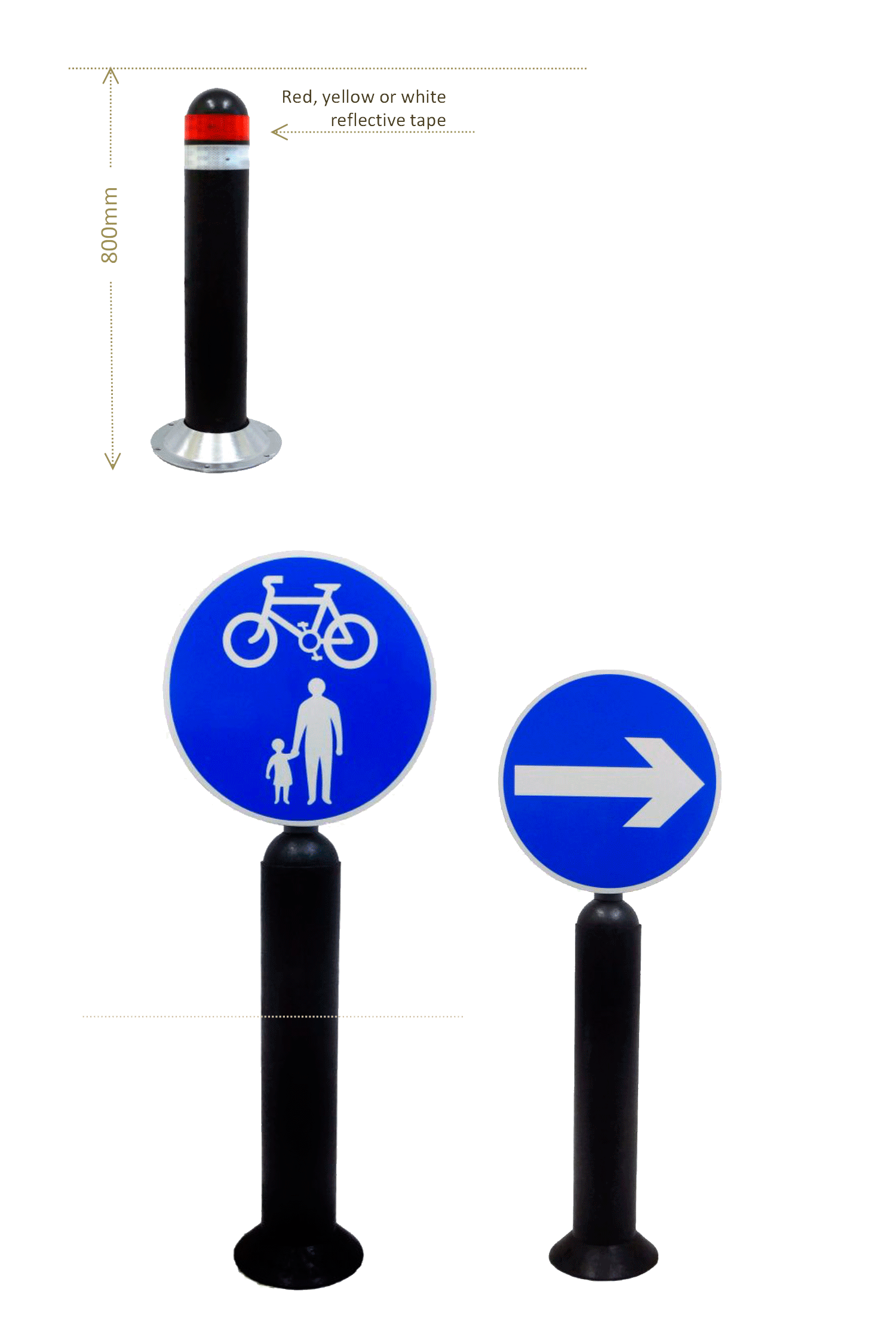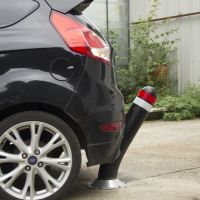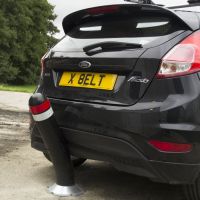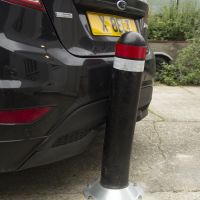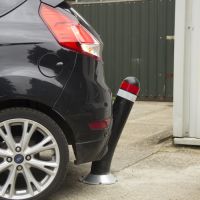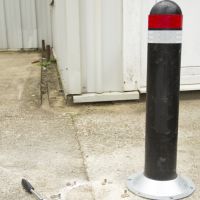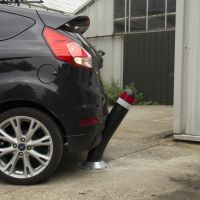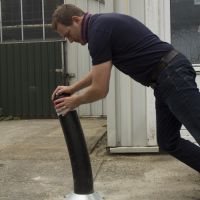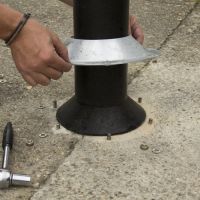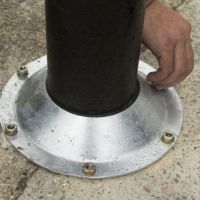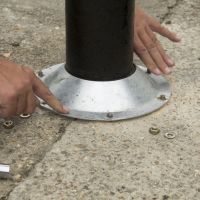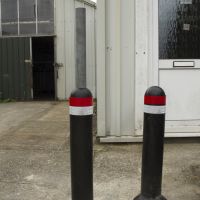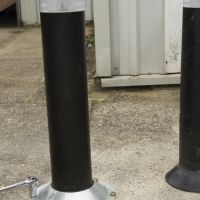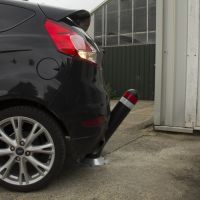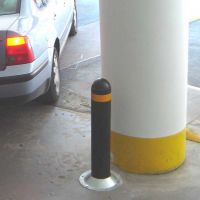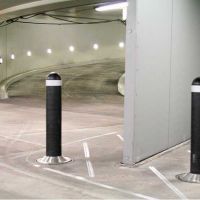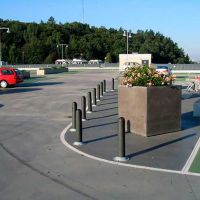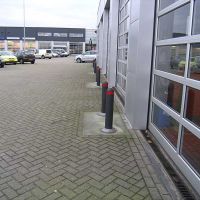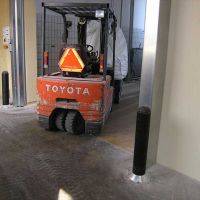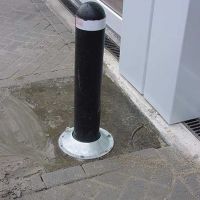-
Details
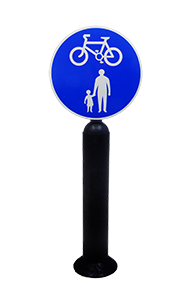
Konus Signal Bollard Prices From £213.87
A hole has been bored in the top of the bollard into which a galvanized steel pipe is mounted. At the top of the steel pipe there are 3 x M8 screws making it possible to install and fasten a 48 mm outside diameter pipe.
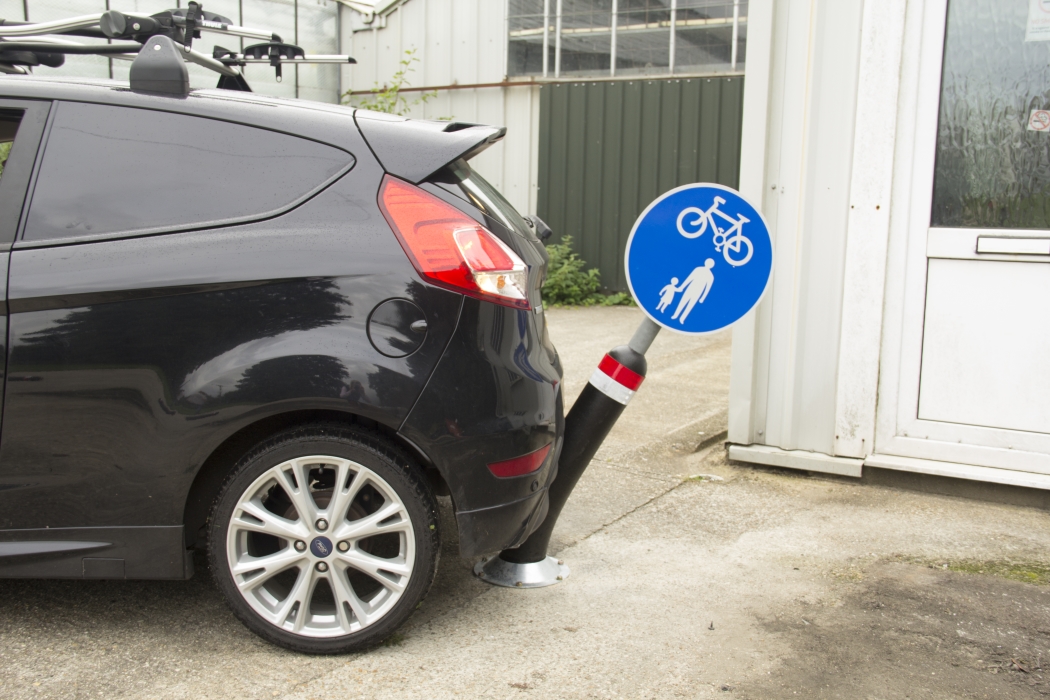
-
Specification
Konus Signal Bollard Specification
MODEL-KONUS BOLLARD SIGNAL
Weight: 16KG
Foundation pipe min. inner diameter: n/a
Max. diameter: 170mm
Measure above ground: 810mm
Measure below ground: n/a
Only designed to bend to 45%Galvanised pipe is supplied with a Konus Bollard. Signal is not supplied,. The galvanised steel pipe is prepared for an installation of a signal. Signal is attached to the galvanised steel pipe which is mounted through the top of the Konus bollard (hole has been drilled in the top of the bollard to fit a galvanised steel pipe). At the top of the steel pipe there are 3 x M8 screws making it possible to install and fasten a 48 mm outside diameter pipe.
Signs or signals needs to be purchased separately.
-
Installation
INSTALLATION

Bollards can be installed in any surface. The most common installation is by using Galvanised Steel, Polyethylene or concrete foundation pipes. Installation pipe increases the functioning of the bollard and its flexible strengths. Pipe is installed in to the ground using various tools (please see more about installation below). Bollard is then slotted in to the pipe stabilised with sand between pipe and bollard.
The Bendy Bollard Company distributes galvanised steel flanged installation pipes and galvanised steel lockable installation pipes.
Read more about installation
There are various tools, which can be used to fix bollards. Installing bollards in pure soil is fairly easy with an opening of approximately 200mm diameter x 1000mm deep When installing bollards in asphalt surface, it is necessary to first cut through the asphalt layer before drilling or digging. By using tools similar to those shown in the picture, cut the opening appropriately at 200mm x 200 mm before drilling or digging.
If the bollard is to be installed in tiled paving area, the foundation can be set 70mm under the surface allowing the tiles to be laid right up to the bollard itself for the best possible finish.
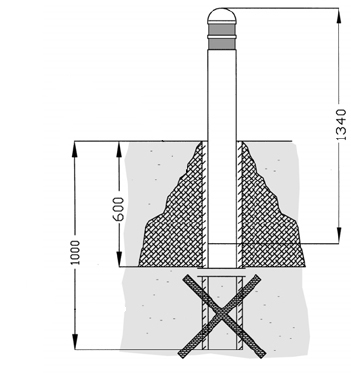
To install bollards into a concreted area it may be necessary to pre-drill the opening with a diamond borer before removing the underlying earth as described earlier. To avoid the risk of drilling into wires, pipes or large obstructions it is possible to reduce the depth of the foundation from 1000mm to a minimum of 550mm, but only if the impact can be absorbed without the foundation becoming misaligned. If you choose to reduce the depth of the foundation it is important that extra concrete is cast around the pipe (see drawing below) to compensate for the shorter length. The more concrete around the pipe the higher the impact force can be absorbed without misaligning the pipe. It is imperative that the foundation has a minimum depth to account for the forces applied at the moment of impact and to ensure that the bollard is upright following a collision.
Please refer to our products for more details and prices for pipe foundation
Within our range of bollards, the above installation information doesn’t apply for model Konus. The Konus bollard is simply bolted to the ground using through bolts (through bolts are available at various sizes between 75mm – 180mm). The bolt length depends on the substrate. Please inspect substrate before drilling bolts into the ground.
-
Photos
-
Video
